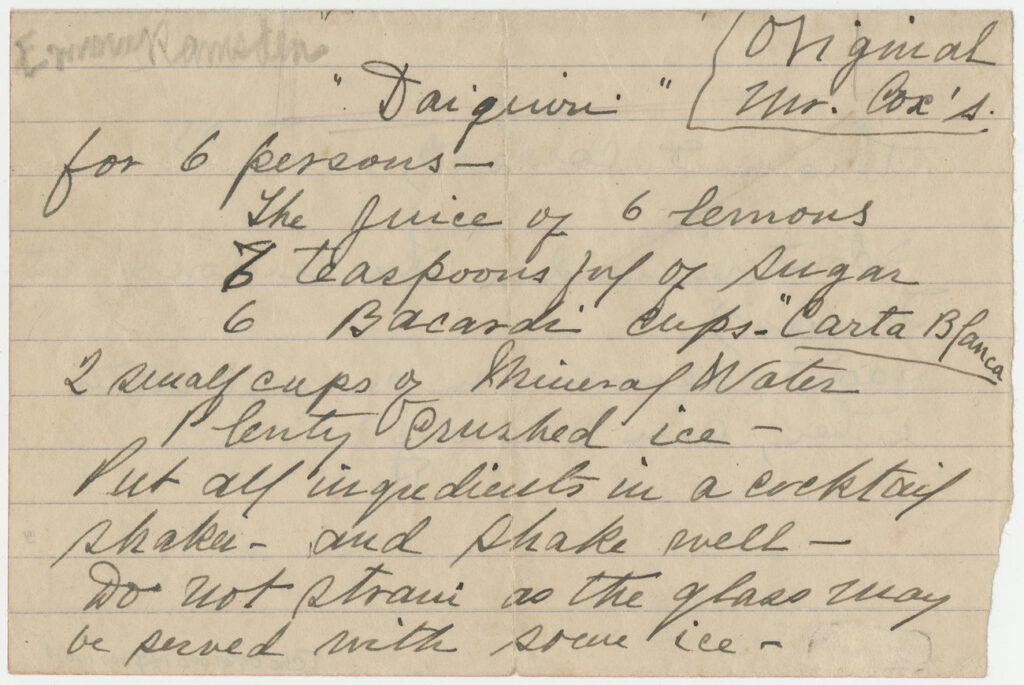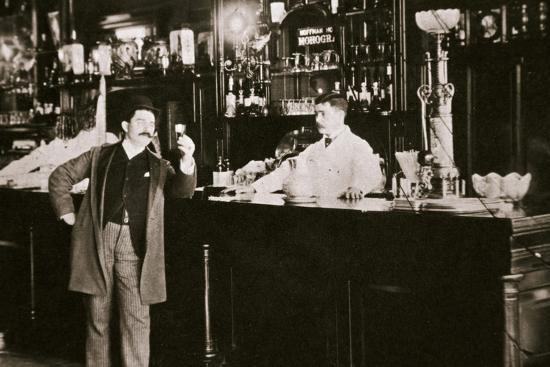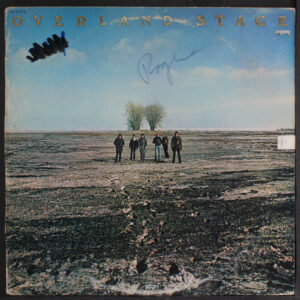First Edition, The Bar Tender’s Guide, by Jerry Thomas
The cocktail, as you know if you have been following this blog, was first mentioned as a noun referring to a drink in The Farmer’s Cabinet, a local newspaper in Amhurst, New Hampshire, on April 28, 1803. It is in a satirical diary entry of a farmer waking up and trying to clear his head with a cocktail. By the text, one can assume that the term is well known, at least to the region served by the paper, since it is not explained. Many believe the word cocktail was created somewhere within a triangle formed by Boston, Albany, and New York City and used as a local hangover cure (ironic, right?). Three years later in 1806 it is defined for the first time in The Balance and Columbian Repository of Hudson, New York as “a stimulating liquor composed of any kind of sugar, water and bitters, vulgarly called a bittered sling.”
And there it stayed, primarily as a medical treatment from drinking too much ale and wine the day/night before, allowing the drinker to head out and go to work thanks to the ‘hair of the dog’ (it was considered morning ‘medicine’). But sometime between 1806 and 1862, it transitioned into the drink we know today – not for medicinal uses, but for recreation. There are many, many references to juleps and slings, cobblers and nogs, but little in the way of a list of cocktails (spirit, sugar, water, and bitters). And then along came a crazy, flamboyant, larger-than-life bartender named Jerry Thomas, who virtually changed everything overnight.

Jerry Thomas was a gambler, a sportsman, an art collector, and self-promoter who at the height of his career traveled Europe with a set of solid silver bar tools, bowler hat cocked to one side, fingers encrusted with diamond rings, and two white pet rats on his shoulders, as he tossed drinks back and forth to huge crowds. Think of the 1988 movie “Cocktail” starring To Cruise – but much, much, much bigger. Theatrics behind the bar – crazy juggling and tossing ice and spirits around – was created in the 60s. The 1860s. But Thomas’s greatest gift to the drinking world was the very first bartender book, “Bar Tenders Guide – How to Mix Drinks, or the Bon Vivant’s Companion”. Until that time, bartenders were secretive – keeping their drinks from being stolen. The craft was handed down, not learned by study. Thomas wrote the book to instruct bartenders how to set up and run their bars, and it listed hundreds of drinks that saw their first mention in print, although he references some as being very old drinks. It made him famous (which I’m sure was the plan all along) and rich – but sadly as a gambler, you can guess the end of his story.
This single act, likely, is responsible for the explosion of creativity and invention within the most productive and interesting era of cocktails. Historians refer to the period as the Golden Age of Cocktails.
Many believe that first cocktail defined in 1806 was the first Old Fashioned – whiskey, sugar, water (later ice), and bitters – or as Jerry Thomas called it in his 1862 book, simply the Whiskey Cocktail. That separated it from its brothers, the Gin Cocktail, the Brandy Cocktail, etc. Asking for a Whiskey Cocktail then was no different than asking for a Moscow Mule today. The Old Fashioned name didn’t catch on until late in the Golden Age when the list of drinks at a bar filled a page. An old timer would just tell the bartender to give them an ‘old-fashioned whiskey cocktail’. Eventually just the Old Fashioned.

Between 1806 and 1862 there were very few cocktails recorded. We know they existed, because Thomas was recording drinks he served, some he claimed credit for, and some that had been around for some time (he mentions some as old recipes). But there is scant evidence of when and where they were created. We have the Sazerac in 1838, the Pimm’s Cup sometime in the 1840s, and the Brandy Crusta in 1853 – but that is about it for cocktails. There was a plethora of mixed drinks, but cocktails had not yet arrived on the scene. Once Thomas published his book, the spigot opened. Drinks were being created right and left, using anything a bartender thought might work. Many, likely, for the purpose of writing a profitable book of cocktails (32 more cocktail books were published by the end of 1900). The 1860s gave us the Whiskey Sour, the Gimlet, the Gin and Tonic, and the New York Sour – the middle two thanks to the British Royal Navy and the creation of Rose’s Lime Juice and Schweppes Tonic Water to accompany the sailors abord ship.

The 1870s introduced liqueurs to the mix (literally) and that crazy absinthe. In the 1880 we see the introduction of vermouth, and the evolution of the Martini and all its children; the dry martini, the split-base martini, the dirty martini, etc. At the eve of the new century in 1898, we have the Daiquiri created in Cuba by an American engineer who planned a party, and ran out of good liquor, He turned to rum, an island favorite but a spirit that had fallen out of fashion in the 1800s and created a form of punch that is essentially the drink we have today.

Literally hundreds of classic cocktails were created by bartenders and mixologists (that term was first used in 1858) in the forty years until 1900. The level of excess in cocktails ran parallel to the era of the Gilded Age, when the United States experienced an unprecedented increase in personal wealth by those at the top – primarily those who frequented the bars. Those on the lower rungs of the economic ladder stayed in the saloon, drinking beer.
The next century brought us thousands of new cocktails, but other than the Tiki cocktails and the introduction of vodka to the US market, most of what was created were variations of formulas and structures invented in those first forty years.
As we approach the160th anniversary of Jerry Thomas’s first bartender’s book in 2022, raise a toast to him, and all the inventive souls behind the bar in those early days, and ponder that your Manhattan or Martini have been around longer than automobiles, airplanes – and even sliced bread.
Cheers!
Bill
AotCB-026
Instagram@architecture_of_the_cocktail
Other RUMinations in Architecture of the Cocktail:
HAVE YOU EVER HAD A REAL DAIQUIRI? by Bill Stott
The Golden Age of Cocktails, by Bill Stott
Hogo! by Bill Stott
How about a nice Hawaiian punch? by Bill Stott
“What one rum can’t do, three rums can” by Bill Stott
Yo, ho, ho, and a Bottle of Rum, by Bill Stott
Yo, ho, ho, and a Bottle of Rum – Part II, by Bill Stott
Spirits Up! Black Tot Day, by Bill Stott



